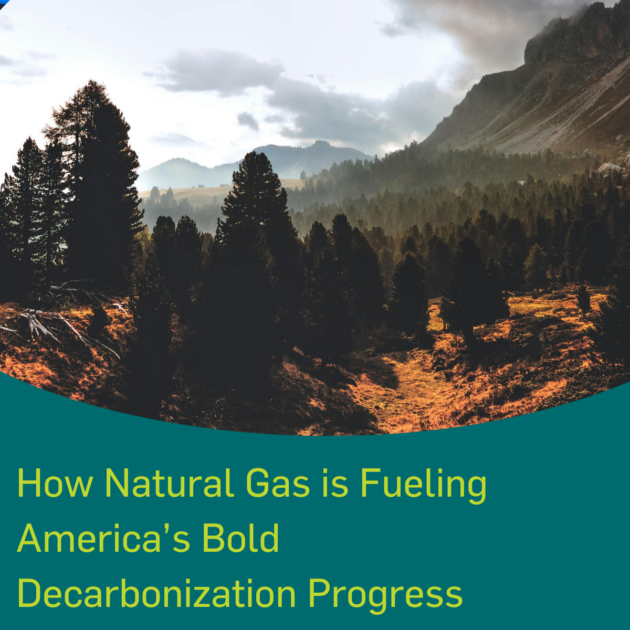How Natural Gas is Fueling America’s Bold Decarbonization Progress

The world recently learned that global greenhouse gas emissions have hopefully begun to decline since a likely peak in 2023. This is excellent news. It is worth acknowledging that this positive development on climate action is the result of years of hard work and innovation that have dramatically shifted the needle on climate projections. For America’s part, the story of our emissions reductions goes hand in hand with the story of American natural gas.
As the graph below from Statista illustrates, energy consumption emissions are lower than at any point since the 1980’s and continue to decline. There was a staggering decline in emissions when economic activity dropped during the COVID-19 pandemic. While this decline was initially partially reversed when the economy recovered, energy emissions have since largely returned to their 2020 nadir – last seen more than 30 years ago, when there were 100 million fewer Americans. We’re also significantly below where emissions were in 1990, which many proposed emissions reductions commitments have been benchmarked against.

The emissions reductions that began in 2008 were largely made possible by natural gas. The U.S. natural gas sector went through a revolution in the late 2000’s with the advent of new technologies that allowed us to affordably access massive new natural gas deposits. Since then, America has become the world’s leading producer and exporter of natural gas – a fuel with half the emissions of the coal it displaced. Because of this increase, 62% of the emissions reductions from the U.S. electric power sector can be attributed to the increased use of natural gas as a substitute for coal.
American natural gas distribution companies are working to roll out new technologies at scale on everything from energy efficiency to renewable fuels like low-carbon RNG and clean hydrogen. These technologies can complement each other to make further decarbonization swifter and more cost-effective. Natural gas and associated infrastructure have helped our nation bend the curve on climate change by lowering American emissions. We are poised to make an even greater difference going forward.
The suite of technologies available is wide and comprehensive. Many of these technologies have numerous payoffs over and above their climate benefits. For example, by employing cutting-edge technologies like drones, infrared cameras, and advanced sensor networks, natural gas companies are identifying and repairing leaks faster and more efficiently. This lowers emissions, improves safety, and helps with reliability by minimizing waste.
Spending on programs to help customers improve energy efficiency is another area where climate action can be beneficial both directly and indirectly. Utilities spend $4.3 million dollars every day helping customers to upgrade to more efficient appliances or weatherize their homes. These programs reduce emissions while saving lower-income customers money.
The advances aren’t limited to improving the efficiency with which we use natural gas or substituting renewable fuels. Pilot programs to directly capture carbon from heating in large buildings like hospitals with combined heat and power generators or apartment buildings have shown promise for immediate and affordable decarbonization, dramatically decreasing building emissions without having to replace the entire system.
America’s natural gas utilities are at the forefront of the nation’s decarbonization efforts, leveraging innovation and technology to drive significant reductions in greenhouse gas emissions. As we look to the future, continued investment in these smart innovations will be crucial for achieving our climate goals and ensuring a sustainable energy future for generations to come. By embracing these advancements, our industry is demonstrating a commitment to our vital role in reducing greenhouse gas emissions.